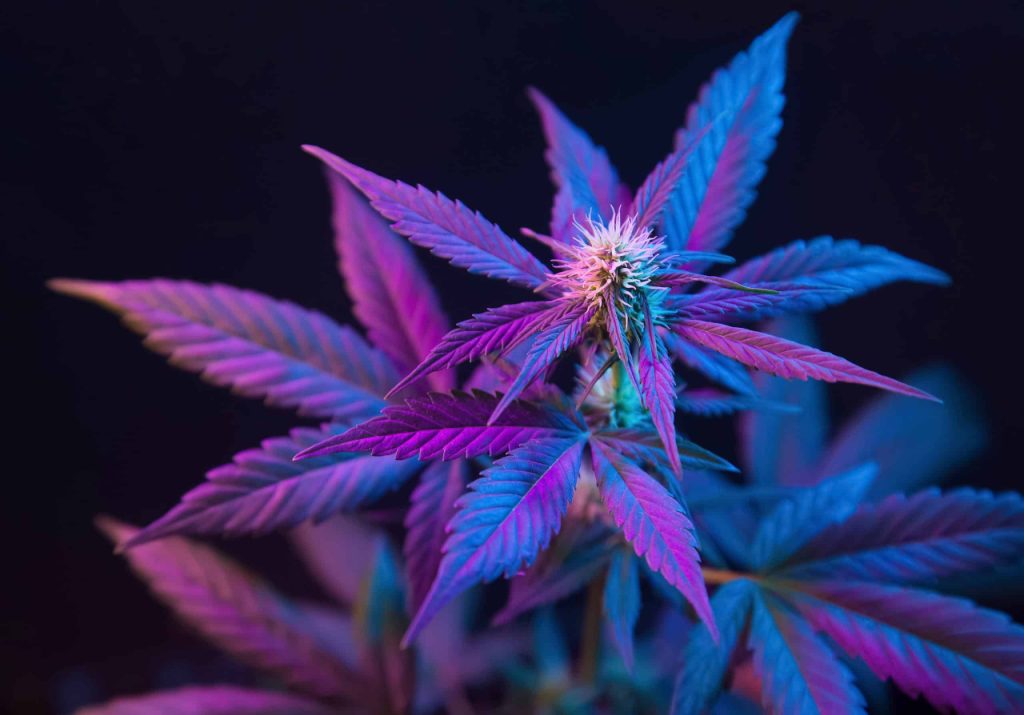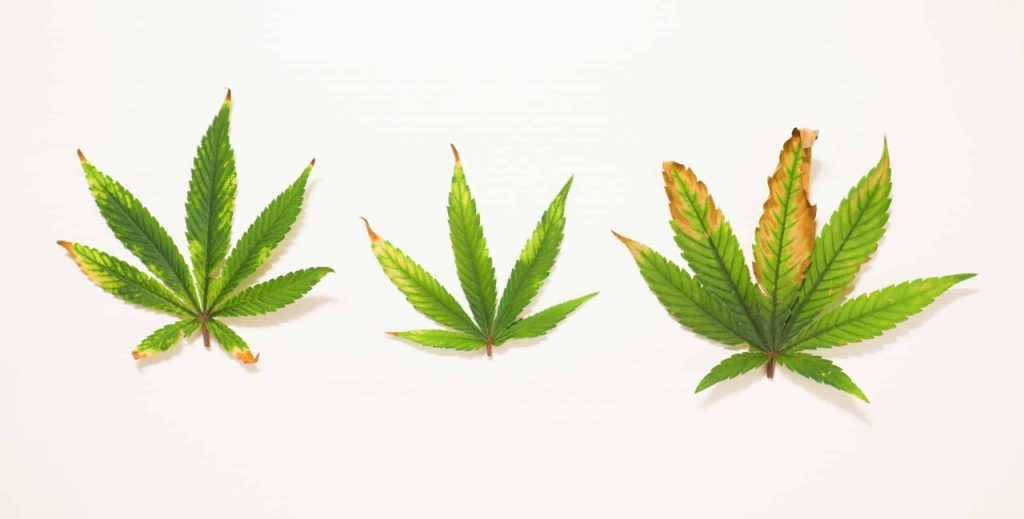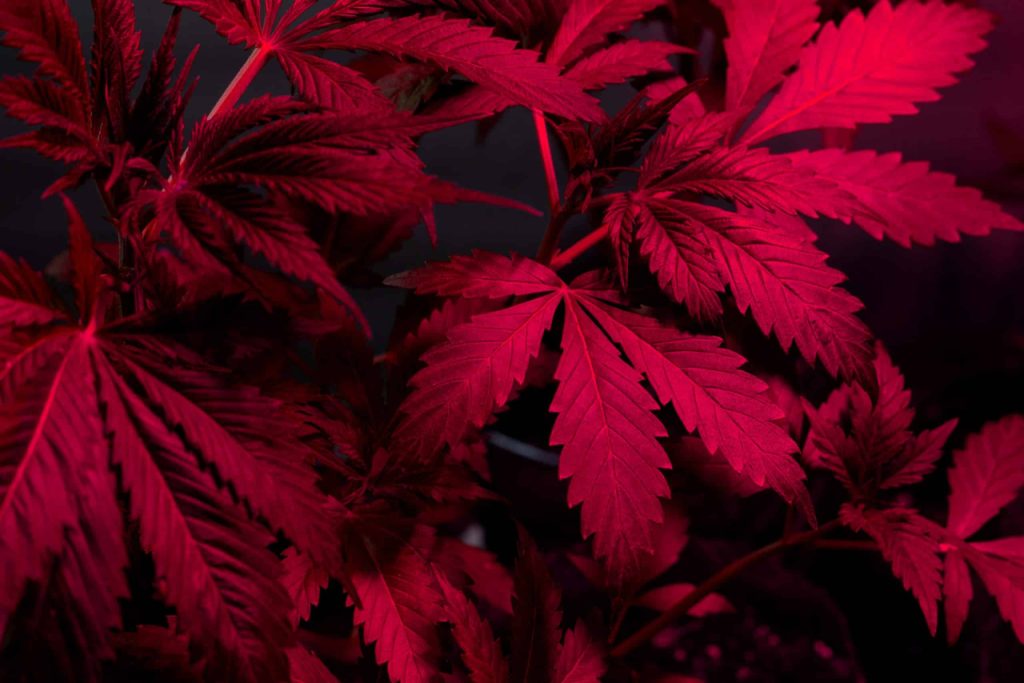Free Tropical Runtz seeds on orders over $150!
Lighting is undoubtedly an essential aspect of plant development. One issue you may have due to lighting is light stress or light burn. This issue is more likely to affect indoor plants, but understanding the reasons and preventative methods will help you enhance your setup and the general health of your plants. Fixing this problem will result in plant recovery and ensure that your buds do not lose quality.
Cannabis light burn is the most severe kind of cannabis light stress, which happens when your plant receives more light than it needs for optimum growth. This can cause the bleaching of specific plant components, such as leaves and flowers. However, light stress cannabis can present itself in various ways, including the browning and drying out of leaves, giving them a dry, crispy quality. Depending on your light source, there are several levels of hazard linked with light and heat stress. The safe distance to hang your lights depends on how much heat they create and other factors such as plant age, airflow level, and light kind (HPS, CFL, LED, etc.).

Light-induced leaf burn is more prevalent nowadays than heat burn since many cannabis farmers are transitioning to high-efficiency LED lights that create less heat for more light. Consequently, many growers incorrectly place the LED light close to the plant, believing it is safe when it is not. Cannabis light burn impacts chlorophyll, the green pigment found within every plant that employs photosynthesis. Chlorophyll is light-sensitive, but too much lighting destroys it, causing it to bleach. As a result, the damaged leaf appears burnt in areas, generally starting from the margins. Therefore, it is critical to guarantee that you will be able to offer your plants the exact conditions they require before beginning any growth.
Light burn cannabis symptoms include yellowing, burning, curling, and rotting leaves. These symptoms are comparable to those associated with nitrogen or cal-mag deficit; however, the essential distinctions are as follows:
The whitening of the buds is one of the most obvious indications of light burn. This typically occurs on top buds when the cannabis lights are too close to the canopy, resulting in entirely white or albino blooms. Despite their appearance, your buds will lose quality and quantity in most circumstances since the high-intensity illumination will destroy the terpenes and cannabinoids, making your bud seem like hay in certain cases. Remember that excessive heat will cause terpenes and cannabinoids to degrade, not just light burn.
Yellowing the fan leaves is another symptom of light stress plants; however, it may be more difficult to identify your plants as having light burn this way since yellowing the leaves might also indicate a nutritional shortage. The essential thing to remember is that nutritional burn normally begins at the bottom, whereas light burn appears at the top, and the leaves do not seem sick, merely discolored.

Bleached buds are a sure sign of too much light during flowering. Affected nugs may appear attractive with their pure white “albino” coloring, but they will have lost a major portion of their effectiveness. Bleached buds have negative properties as well. Light-stress cannabis effects do not appear overnight. You may be weeks into growth when you see your plants looking burnt. Plants, like you, can withstand a few days of bright illumination, but if it persists for too long—say, a week—it will feel the consequences. Cannabis light burn symptoms may appear near harvest, indicating that yield isn’t greatly impaired.
To limit the possibilities of burnt cannabis, set the grow light where the manufacturer suggests. Check your grow light’s PPFD. The PPFD (photosynthetic photon flux density) quantifies how many photosynthetically useful photons strike a distant surface. When discussing and comparing different light sources for plants, PPFD is presently the most appropriate word. Setting up a grow room using watts or lumens is fine, but PPFD is a superior measurement since it considers the light the plant need for maximum growth. There are several restrictions to supplying CO2 for cannabis into your grow room to raise PPFD over what is suggested. Using a PAR or lux meter, you’ll observe that the light is stronger in the center. This is also where light stress plants symptoms typically appear.
Growers cannot cure light burns on cannabis, but they may avoid them. Scorched leaves begin to deteriorate and must be removed to prevent disease transmission. Leaves that haven’t been entirely burned can still be used if you don’t consider them a hazard. Heat is produced by all grow lights, although HID bulbs create more than fluorescent or LED lights. High temperatures can harm your cannabis plants if the grow light is too near the canopy, resulting in burnt cannabis. Here’s what you can do to solve such a problem:
Cannabis light stress may be genetically determined, the same as how some humans can take sunburn longer than others. Some equatorial strains, such as hazes and Sativa, are more heat tolerant and want more sunshine. Don’t be surprised if you plant a new strain under your normal grow light and it grows higher than planned or if the light is too powerful or inadequate.
Cannabis light stress is sometimes confused with nitrogen deficit since the symptoms of yellowing leaves are identical. The greatest way to tell the difference is that deficits normally begin at the bottom of the plant, but light burn cannabis begins at the top and progresses downward. Because their green veins retain moisture, burnt leaves feel crunchy and are more difficult to remove from the crop. Leaves on a plant suffering from cannabis nitrogen deficiency are easy to pick off and frequently fall off without your participation.
Excessive heat might devastate the entire plant. Too much light enters the plant from the top, striking the canopy and bleaching your succulent buds during flowering. Plants cannot survive high temperatures and may wither and die if the condition persists. Too much light on cannabis can harm the buds and burn the leaves, but too much heat is unquestionably worse. Cannabinoids in bleached buds evaporate, reducing their potency. You must elevate the lights to avoid scorched cannabis while keeping them low enough to provide appropriate illumination.

Additionally, you may adjust grow roomtemperatures in various ways, including improving ventilation in your grow room to allow heat to exit quickly. Always keep an eye on the temperature range in your grow area to ensure the strains you’re producing can withstand it. Examine your grow lamp’s PPFD to determine where to suspend your light above your canopy.
LEDs don’t create much heat, but they can emit an excessive amount of light. LED light burn is a real possibility that many gardeners neglect. Many contemporary LED grows lights offer intensity controls to help with this problem. Although LED lights do not get hot, resist the desire to turn them off. Their brightness may swiftly harm plants. After only one day, you may see cannabis light stress effects.
Light burn is significantly less likely to occur when growing cannabis outdoors, even in the most direct sunshine. The only time you need to be concerned about too much sun is when you relocate plants indoors to outside. In this instance, your old indoor plants must adjust to their new surroundings. You should not immediately take them from your inside tent to a sun-drenched setting, but rather place them in a shaded, outside position to adjust to the new, bright environment gradually. After a week, you can move the plant to a sunnier location.
Changes in your plant’s growing environment, such as reducing or rising light intensity or temperature, can need variable watering and nutrient requirements. More light will cause your plants to develop quicker, necessitating more water and nutrients. Watering regularly in such growth circumstances with intense light and high temperatures can also reduce light burn. Because you cannot repair light-burned plants, you must prevent this from happening. This is particularly true if you have no expertise, so please do your study before planting and attempt to monitor the progress of your cannabis plants daily. If they exhibit any abnormal circumstances, you can correct them in time to have the least impact on your cannabis plant.





Offers
This product is not for use by or sale to persons under the age of 18. This product should be used only as directed on the label. It should not be used if you are pregnant or nursing. Consult with a physician before use if you have a serious medical condition or use prescription medications. A doctor’s advice should be sought before using any hemp products. All trademarks and copyrights are property of their respective owners and not affiliated with nor do they endorse this product. These statements have not been evaluated by the FDA. This product is not intended to diagnose, treat, cure or prevent any disease. By using this site you agree to follow the Privacy Policy and all Terms & Conditions printed on this site. All products contain less than 0.3% Cannabinoid-compliant with applicable Federal Laws. Please make yourself aware of any and all applicable laws regarding hemp in your jurisdiction. Premium Cultivars accepts no liability or responsibility regarding germination laws in any specific locale state or national jurisdictions.THCA products are not available for shipment to the following states: Hawaii, Idaho, Minnesota, Oregon, Rhode Island, Utah, Vermont *Note: Products with Total THC content above 0.3% must not be shipped to these states.
We want to help you get your hands on the seeds you want, take 20% off your next purchase when you enter your email below!
We want to help you get your hands on the seeds you want, take 20% off your next purchase when you enter your email below!